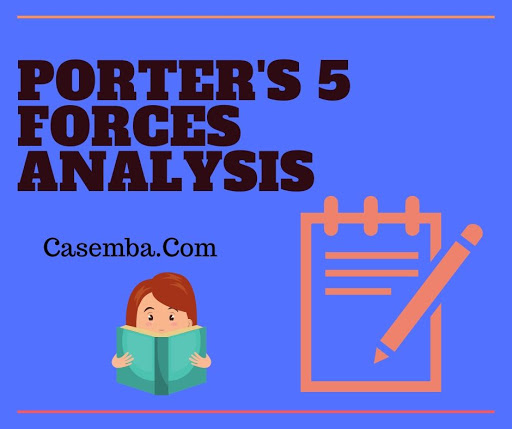Porter's 5 Forces of Abbs Hydropower Sustainability Dilemma Case Study Help
This is not the actual case solution. To get the case solution place your order on the site and contact website support.
Home >> Vincent Dessain >> Abbs Hydropower Sustainability Dilemma >> Porters Analysis
Porter's Five Forces of Abbs Hydropower Sustainability Dilemma Case Analysis
The porter five forces design would assist in acquiring insights into the Porter's 5 Forces of Abbs Hydropower Sustainability Dilemma Case Help industry and measure the likelihood of the success of the options, which has actually been thought about by the management of the business for the purpose of handling the emerging problems associated with the reducing membership rate of customers.
1. Intensity of rivalry
 It is to alert that the Porter's 5 Forces of Abbs Hydropower Sustainability Dilemma Case Help belongs of the multinational show business in the United States. The company has actually been participated in supplying the services in more than ninety nations with the video as needed, items of streaming media and media company.
It is to alert that the Porter's 5 Forces of Abbs Hydropower Sustainability Dilemma Case Help belongs of the multinational show business in the United States. The company has actually been participated in supplying the services in more than ninety nations with the video as needed, items of streaming media and media company.
The industry where the Porter's 5 Forces of Abbs Hydropower Sustainability Dilemma Case Analysis has actually been operating because its creation has many market players with the considerable market share and increased incomes. There is an intense level of competition or competition in the media and show business, engaging companies to aim in order to keep the existing clients via providing services at inexpensive or reasonable prices. Porter's 5 Forces of Abbs Hydropower Sustainability Dilemma Case Solution has been facing fierce competition from the rival business using on demand videos, conventional broadcaster and merchants selling DVDs. The main direct rival of Porter's Five Forces of Abbs Hydropower Sustainability Dilemma Case Solution is Amazon, considering that both of these business provide DVDs on lease, hence competing in this domain for the comparable target market.
Quickly, the strength of rivalry is strong in the market and it is important for the business to come up with distinct and innovative offerings as the audience or customers are more advanced in such modern-day innovation period.
2. Threats of new entrants
There is a high expense of entryway in the media and entrainment market. The show business needs a large capital amount as the companies which are participated in providing entertainment service have larger start-up expense, which includes:
Legal cost.
Marketing expense.
Distribution cost.
Licensing cost.
In contrast, the existing home entertainment provider has actually been extensively working on their targeted segments with the particular expertise, which is why the threat of new entrants is low.
Another essential element is the strength of competition within the crucial market players in the industry, due to which the brand-new entrant think twice while getting in into the market. The innovation and patterns in the media market are progressing on constant basis, which is adjusted by market rivals and Porter's 5 Forces of Abbs Hydropower Sustainability Dilemma Case Solution.
3. Threat of substitutes
The danger of replacements in the market position moderate threat level in media and the entertainment industry. The customer might also engage in other leisure activities and source of details as compared to watching media content and online streaming.
4. Bargaining power of buyer
The characteristics of media and show business allows the consumers to have high bargaining power. The profits and sales created by business are based upon the subscribers positioned in diverse locations all around the world. The low expense of switching enables the customers to look for other media service providers and cancel their Porter's Five Forces of Abbs Hydropower Sustainability Dilemma Case Solution subscription, hence increasing the business threat. Due to this, the company might not charge high prices for services from the customers, and it needs to keep the pricing strategy according to consumer need, with very little increase in price.
5. Bargaining power of suppliers
Because Porter's 5 Forces of Abbs Hydropower Sustainability Dilemma Case Help has actually been competing against the standard distributor of entertainment and media, it needs to show greater versatility in agreement as compared to the standard services. The items is technology based, the dependence of the business are increasing on continuous basis.
Goals and Objectives of the Company:
In Illinois, United States of America, one of the best manufacturer of sensing unit and competitive organization is Case Service. The organization is associated with manufacturing of wide product range and development of activities, networks and procedures for being successful among the competitive environment of market giving it a substantial advantage over competitiveness. The company's goals is principally to be the producer of sensing unit with high quality and highly tailored organization surrounded by the premium market of sensor manufacturing in the United States of America.
The aim of the company is to bring reduction in the product rates by increasing the sales system for every single product. The organizational management is involved in determination of potential products to offer their customer in both long term and short term means. The organizational strength involves the facility of competitive position within the production market of sensing unit in the United States of America on the basis of five pillars that includes client care, effectiveness in operation management, acknowledgment of brand name, adjustable capabilities and technical innovation.
The organization is a leading one and carrying out as a leader in the sensing unit market of the United States for their adjustable services and systems of sensing unit. The organization has actually employed cross-functional supervisors who are responsible for change and understanding of the organization's strategy for competitiveness whereas, the company's weakness involves the decision making in regard to the items' deletion or retention only on the basis of monetary elements.
